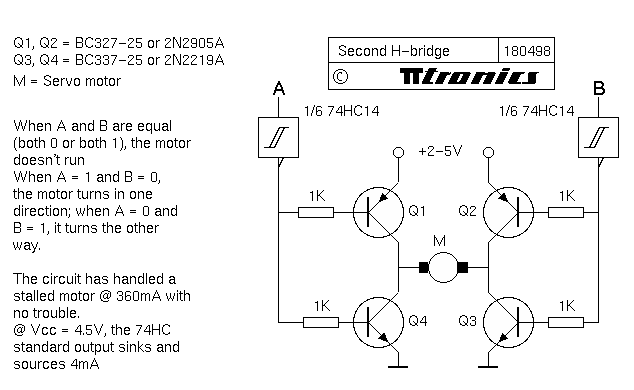I have written a program on the comp to use my parallel port to control external devices like a motor. unfortunately, it can only give some 2.5 volts and for some reason (probably internal resistance) cannot run the motor independently.
I connected it to a transistor to amplify the current and used it. It works fine.
Now my question is this:
I need a circuit to make the motor run clockwise, and then when i alternate the output of the parallel port, i want it to run counter-clockwise. The parallel port will alternate between 1-0 and 0-1 so what can i do with this ?
I need to first amplify the current using the transistors, but i don't know where to connect the load (motor) !
Also, when the output is 0-0, it shouldn't run..... so theres a start button(1-0 or 0-1),an alternate button(which switches 1 for 0) and a stop button(0-0) from my parallel port.
Thanks.
I connected it to a transistor to amplify the current and used it. It works fine.
Now my question is this:
I need a circuit to make the motor run clockwise, and then when i alternate the output of the parallel port, i want it to run counter-clockwise. The parallel port will alternate between 1-0 and 0-1 so what can i do with this ?
I need to first amplify the current using the transistors, but i don't know where to connect the load (motor) !
Also, when the output is 0-0, it shouldn't run..... so theres a start button(1-0 or 0-1),an alternate button(which switches 1 for 0) and a stop button(0-0) from my parallel port.
Thanks.


